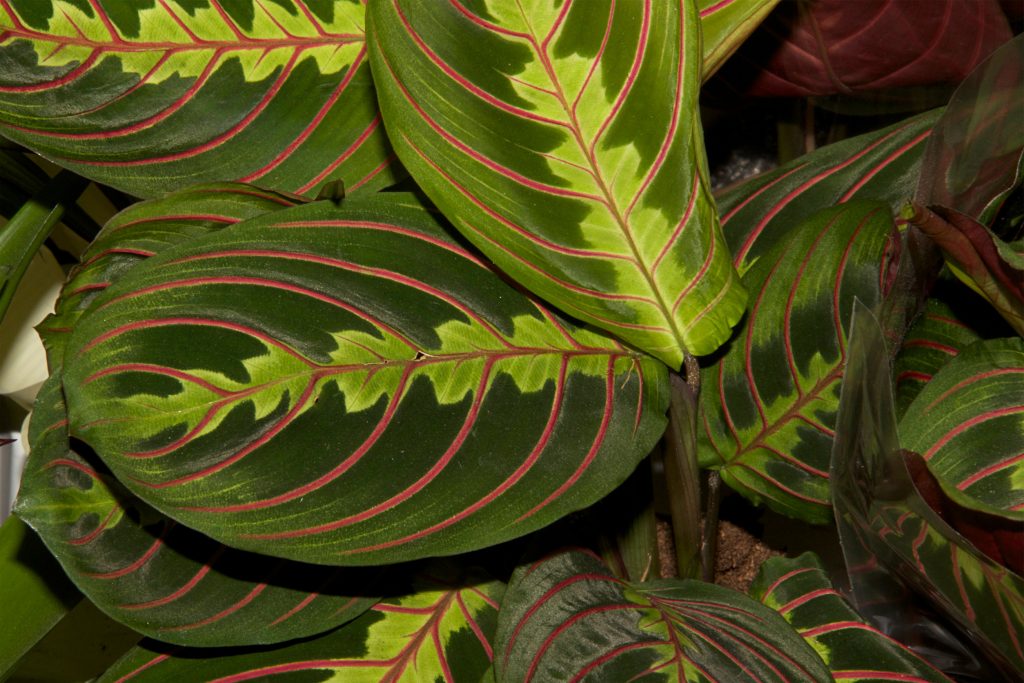Native to South America, the Maranta is famous for its unique foliage. Characterized by green leaves with splotches of color down the midrib and feathered veins- there are many varieties that present many different colors. Named for Italian physician and botanist Bartolomeo Maranta, its alternate name, the prayer plant, comes from one of its most distinct qualities. The Maranta’s leaves lie flat during the daytime, then fold up at night, moving depending on light exposure. This is known as nyctinasty—a nighttime response in which the leaves fold up in ‘prayer’. These plants are often grouped together with the Calathea because of their unique movement properties, but they are each a separate genus within the Marantacaae family. The Maranta’s leaves are primarily oval, while those of the Calathea come in a wide variety of shapes. Maranatas are non toxic to pets and humans.
Marantas thrive in bright to medium indirect light. They can tolerate lower light conditions as well.
Water with filtered or rain water when soil is 25% dry.
These plants thrive in humid environments ideally between 50%-80% humidity, and in temperatures between 65-85°F.
The easiest way to propagate Marantas is to divide up the plant while repotting. Work the roots apart carefully, ensuring each division has a good mass of roots and stems. You can also propagate Marantas via nodes. Cut between two established nodes on your Maranta, and place one node in water until roots develop.
If your Maranta starts behaving differently, there’s a chance something may be wrong. Most of the time, this is due to too little light or the soil or potting mix is getting too dry. Simply move it to an area where it can get bright, indirect sunlight.
